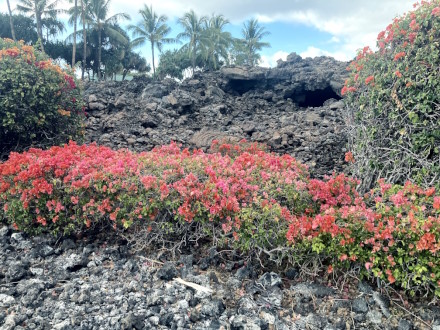Transcendentalists see God as separate from the world and perfectly good, which leads to the problem of evil: why does God allow it? Immanentists don't have this problem, because they see God as containing all good and all evil -- and then it's up to us, which of those aspects we call upon.
The way immanentists think about God is not unlike the way we think about the government. The government is not mythical but practical. It is both one and many. Although it's a real thing, we can't exactly see "the government" or talk to it -- all we can do is talk to various people who represent the government and perform some of its functions. In the same way, the BaKongo don't talk directly to Nzambi, only to intermediaries, which could be anything from living shamans to dead ancestors to animal spirits.
The funny thing is, even totally egalitarian cultures, where no person has power over any other person, still describe the spirit world as hierarchical. Materialists would say, they must have been exposed to hierarchical human cultures, in order to project them on their imaginary world. Immanentists would say, the spirit world came first. It is the deep nature of reality to have nested spheres of influence, for example, one spirit for the mountain, and one spirit for each tree on the mountain. It doesn't mean the mountain can force the trees to do something they'd rather not do, but that's what tends to happen in human hierarchies.
 April 29. So last week we finally made it to Hawaii, specifically Kona on the big island. It's an easy flight from Seattle, and there are ways to do it more cheaply than we did it, but we got the full tourist experience. A few notes:
April 29. So last week we finally made it to Hawaii, specifically Kona on the big island. It's an easy flight from Seattle, and there are ways to do it more cheaply than we did it, but we got the full tourist experience. A few notes:So much lava. If there is a wall, it's going to be built of cemented-together lava rocks. I've seen photos of smooth lava, but most of it is very rough. Off the side of the road it's just endless jagged black rubble, in various stages of plants growing there since the last flow. The landscapes could be anything from blasted desert to scrubby grass to savanna to jungle.
The color of the ocean, looking down from a boat, is more beautiful than I thought colors could be. I didn't even take a picture because I've seen surfing movies and it's nothing like touching it with your actual eyes. It reminded me of the lyric from Once In A Lifetime: "Into the blue again, after the money's gone."
The ocean is not even lukewarm. We went snorkeling and the only reason I wasn't shivering is that I didn't take a flotation noodle and I had to burn a lot of energy to stay afloat. But parasailing is surprisingly peaceful. There's no adrenaline rush at all, just floating serenely through the sky.
Best restaurant in greater Kona: Rebel Kitchen. It's far enough out from the tourist area that the staff are not obsequious, and most of the diners are locals. Everything on the small menu is creative and made carefully.]]>